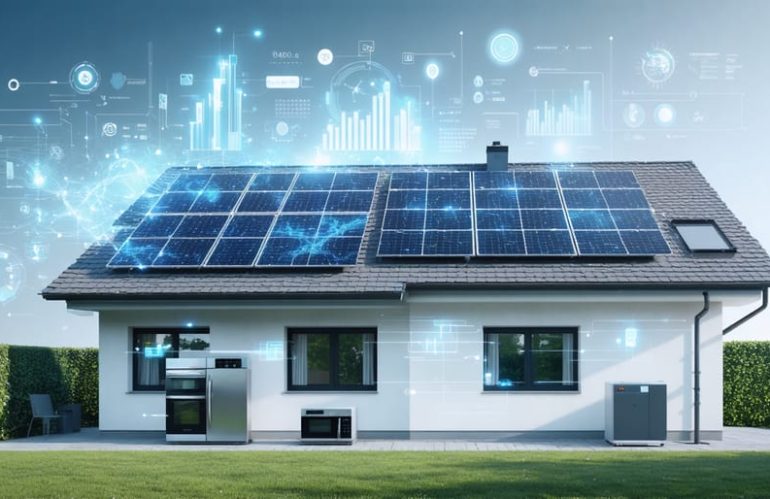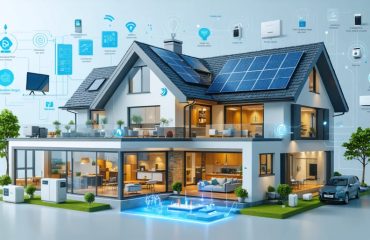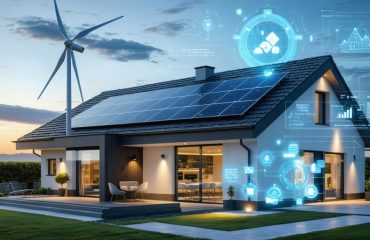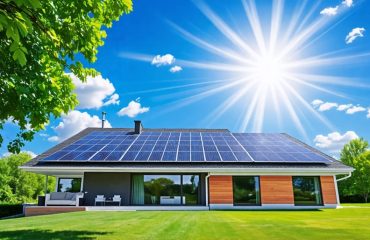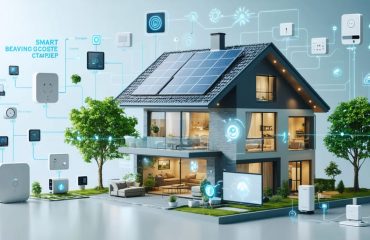Transform your home into an energy-efficient powerhouse by integrating smart technology with residential solar systems. Today’s intelligent home energy solutions combine automated controls, real-time monitoring, and adaptive learning to slash utility bills while maximizing renewable energy usage.
Smart home energy management systems now deliver unprecedented control over household power consumption. From AI-powered thermostats that optimize heating and cooling cycles to automated lighting that responds to occupancy patterns, these technologies work seamlessly to reduce waste. Mobile apps provide instant visibility into energy usage patterns, empowering homeowners to make informed decisions about their consumption habits.
The integration of smart technology with solar power creates a dynamic ecosystem that automatically adjusts to weather patterns, peak utility rates, and household routines. This intelligent orchestration ensures that solar-generated power is used efficiently or stored appropriately, while drawing from the grid only when most cost-effective. For environmentally conscious homeowners seeking both sustainability and savings, smart energy solutions represent the next evolution in home energy management.
How Smart Solar Homes Work
Core Components
A modern smart solar home system consists of several interconnected components working together to maximize energy efficiency. At its heart lies the solar panel array, which captures sunlight and converts it into usable electricity. These panels connect to a smart inverter that transforms DC power into AC power while monitoring system performance in real-time.
The smart home energy management system (EMS) serves as the brain of the operation, coordinating between various components and optimizing energy usage based on your habits and preferences. Energy storage solutions, typically in the form of advanced batteries, store excess power for use during peak hours or cloudy days.
Smart meters and monitoring devices provide detailed insights into your energy consumption patterns, while automated controls allow you to manage appliances remotely. Smart thermostats adjust heating and cooling based on occupancy and weather conditions, while smart plugs and switches help eliminate phantom energy waste.
These components communicate through a central hub, allowing you to monitor and control your entire system through a user-friendly smartphone app or web interface.
Real-Time Monitoring
Modern smart home energy systems put powerful monitoring capabilities right at your fingertips. Through user-friendly mobile apps and web dashboards, you can track your home’s energy production and consumption in real-time. These intuitive interfaces display easy-to-understand graphs and charts showing how much electricity your solar panels are generating and where that power is being used throughout your home.
With real-time monitoring, you can see exactly when your home is producing excess energy to sell back to the grid and when you’re drawing power from utility companies. Many systems send instant notifications about unusual energy usage patterns or system issues, helping you spot and address problems quickly. You can even track historical data to identify energy consumption trends and optimize your usage habits.
Smart monitoring solutions also provide detailed breakdowns of individual appliance energy use, enabling you to identify energy-hungry devices and make informed decisions about when to run them. This granular insight helps you maximize solar power usage during peak production hours and minimize reliance on grid electricity, ultimately increasing your energy savings.
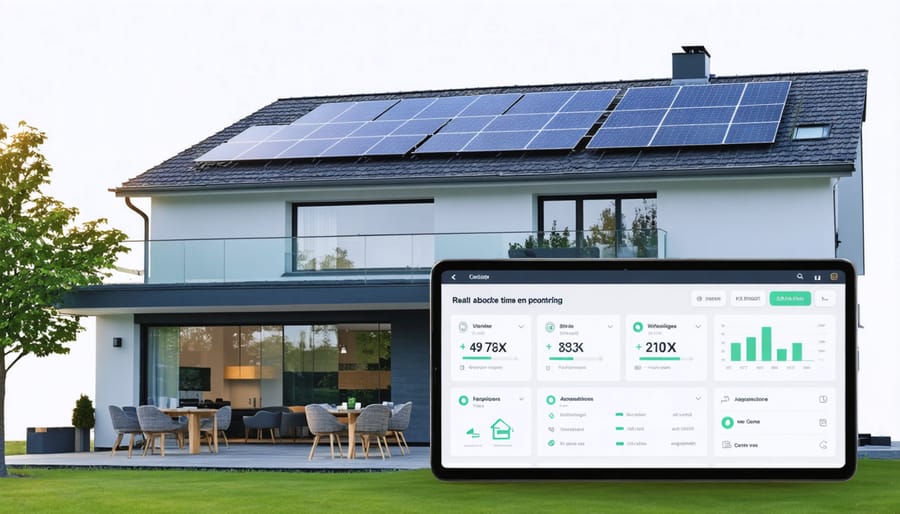
Smart Energy Management Features
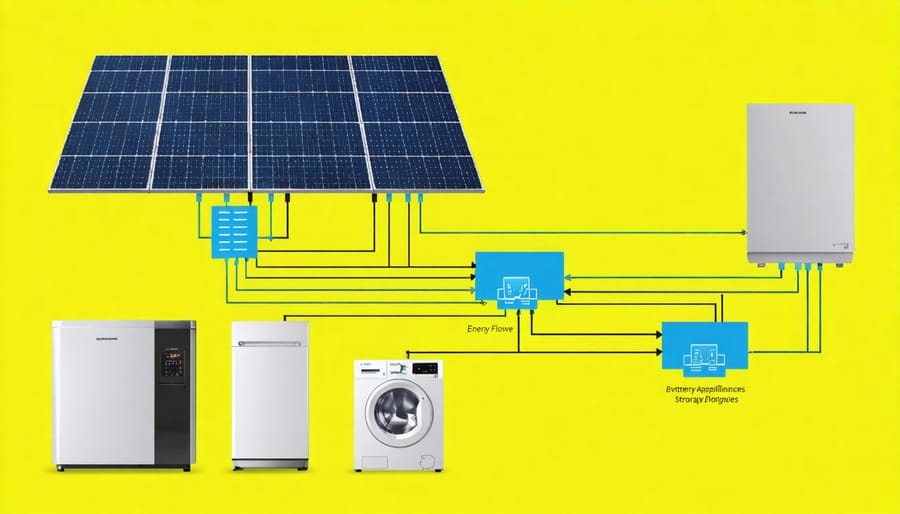
Automated Load Balancing
Automated load balancing is like having a smart conductor orchestrating your home’s energy symphony throughout the day. This intelligent system continuously monitors your household’s energy consumption patterns and adjusts power distribution in real-time to maximize efficiency and minimize waste.
During peak sunlight hours, when your solar panels are generating maximum power, the system automatically directs excess energy to high-consumption appliances like washing machines or dishwashers. It can also store surplus energy in batteries for later use or feed it back to the grid for credits on your utility bill.
As the sun sets and solar production decreases, the system seamlessly shifts to using stored energy or grid power, prioritizing essential devices while managing optional power usage. For example, it might slightly reduce your air conditioning during off-peak hours or schedule your electric vehicle charging for times when electricity rates are lowest.
The system learns from your daily routines and adapts accordingly. If it notices you typically run your dishwasher after dinner, it will ensure enough energy is reserved for this task. This smart scheduling helps prevent energy waste and reduces strain on the grid during peak demand periods.
By optimizing when and how your appliances use power, automated load balancing can reduce your energy bills by 15-30% while maintaining comfort and convenience in your home.
Battery Storage Integration
Battery storage integration is a crucial component of modern smart home energy systems, acting as the bridge between power generation and consumption. By storing excess energy during peak production periods and releasing it when needed, homeowners can significantly reduce their reliance on the grid and lower their utility bills. To maximize battery storage efficiency, smart home systems employ advanced algorithms that learn your household’s energy consumption patterns.
These intelligent systems automatically manage power flow, ensuring stored energy is used when electricity rates are highest or during grid outages. The integration process is seamless, with smart technology handling the complex decisions about when to store, use, or sell excess power back to the grid. Modern battery systems also come with user-friendly apps that provide real-time monitoring and control, allowing homeowners to track their energy usage and storage levels from anywhere.
What makes battery storage truly “smart” is its ability to adapt to changing conditions. During weather events that might affect solar production, the system can automatically adjust its charging and discharging patterns. It can also coordinate with other smart home devices, like thermostats and appliances, to optimize energy usage based on stored power availability. This intelligent coordination ensures you’re making the most of your stored energy while maintaining comfort and convenience.
Smart Appliance Coordination
Smart appliance coordination represents a game-changing advancement in home energy management, allowing your household devices to work in harmony with your solar power system. By synchronizing your appliances with peak solar production hours, you can maximize the use of clean energy while minimizing reliance on grid power.
Modern smart appliances can be programmed to automatically run during times of highest solar generation, typically between 10 AM and 4 PM. For example, your dishwasher, washing machine, and dryer can be scheduled to operate when your solar panels are producing maximum power. This intelligent timing ensures you’re using the energy you generate rather than sending it back to the grid.
Many smart home systems now offer mobile apps that provide real-time insights into solar production and appliance energy consumption. These apps enable you to monitor energy usage patterns and make informed decisions about when to run various devices. Some systems even use artificial intelligence to learn your household routines and automatically adjust appliance schedules for optimal energy efficiency.
The benefits extend beyond energy optimization. By running appliances during peak solar hours, you can significantly reduce your electricity bills and decrease your carbon footprint. Some utility companies offer time-of-use rates, making it even more advantageous to shift your energy consumption to daylight hours when solar production is at its highest.
Financial Benefits
Energy Bill Reduction
Real-world examples demonstrate the impressive savings potential of smart home energy solutions. A recent study of 1,000 households showed that homes using smart thermostats saved an average of 10-12% on heating costs and 15% on cooling expenses, translating to annual savings of $130-150. Smart lighting systems typically reduce electricity consumption by 25-35%, with many homeowners reporting yearly savings of $75-100 on lighting alone.
The Smith family from Colorado saw their monthly energy bills drop by 40% after installing a comprehensive smart home system. Their setup, which includes automated thermostats, smart plugs, and LED lighting, paid for itself within 18 months. In California, the Martinez household combined solar panels with smart energy management, reducing their utility bills by 70% and earning credits during peak production hours.
Small businesses have also benefited significantly. A local coffee shop implemented smart energy controls and cut their energy costs by $2,400 annually. The system automatically adjusts heating, cooling, and lighting based on business hours and occupancy levels.
These savings become even more substantial when combined with energy-efficient appliances and proper home insulation. Many utility companies now offer rebates and incentives for smart home technology adoption, making the initial investment more affordable and the return on investment even more attractive.
Smart Grid Integration
One of the most exciting features of modern solar power systems is their ability to connect with the smart grid, offering homeowners unprecedented control over their energy usage and costs. Through smart grid integration benefits, you can not only consume power but also sell excess electricity back to utility companies.
When your solar panels generate more power than your home needs, this surplus electricity flows back into the grid, causing your meter to run backward. This process, known as net metering, creates credits on your utility bill. During periods when your panels aren’t producing enough power, such as nighttime or cloudy days, you can use these credits to offset your electricity costs.
The financial advantages are substantial. Many homeowners see their electricity bills drop dramatically, with some achieving a zero-balance or even receiving payments from their utility company. This two-way power flow also helps stabilize the broader electrical grid, making our energy infrastructure more reliable and sustainable.
Smart meters and monitoring systems make it easy to track your energy production and consumption in real-time, helping you maximize your savings. You can identify peak production times and adjust your usage patterns accordingly, ensuring you get the most value from your solar investment while contributing to a cleaner, more efficient energy future.
Getting Started
System Assessment
Before implementing smart home energy solutions, it’s crucial to conduct a thorough assessment of your home’s energy needs and consumption patterns. Start by reviewing your utility bills from the past 12 months to understand your usage trends and identify peak consumption periods. This data serves as a baseline for measuring future improvements.
Next, perform a room-by-room evaluation to identify major energy consumers and potential efficiency gaps. Pay special attention to your HVAC system, lighting setup, and major appliances. Consider scheduling a professional energy audit, which can reveal hidden issues like air leaks or insulation problems that affect your home’s overall efficiency.
Take note of your daily routines and preferences – when you’re typically home, your temperature comfort levels, and lighting needs. This information helps determine which smart solutions will best boost home energy efficiency while maintaining comfort.
Finally, assess your budget and prioritize improvements based on potential return on investment. Some solutions, like smart thermostats and LED lighting, offer quick payback periods, while others might require longer-term planning.
Professional Installation
While DIY installation might seem tempting, professional installation of smart home energy solutions is crucial for optimal performance and safety. Certified installers bring extensive knowledge of electrical systems, local building codes, and manufacturer specifications to ensure your system operates at peak efficiency.
Professional installers conduct thorough home assessments to determine the best placement of sensors, smart thermostats, and energy monitoring devices. They can identify potential issues that might affect system performance and recommend appropriate solutions. Their expertise also ensures proper integration with your existing home systems, including HVAC, lighting, and appliances.
Most reputable manufacturers partner with certified installers who receive specialized training in their products. This expertise translates to proper calibration, seamless connectivity, and maximum energy savings. Professional installation often includes system programming, user training, and ongoing support to help you maximize your investment.
Additionally, professional installation typically comes with warranties and guarantees that protect your investment. Many insurance companies and local authorities require professional installation for coverage and compliance purposes, making it a wise choice for long-term peace of mind.
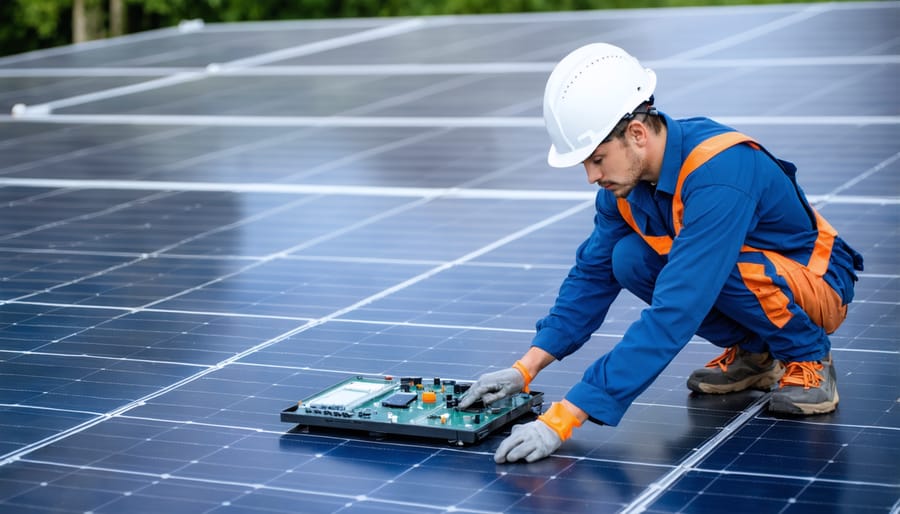
Smart home energy solutions represent a significant step forward in creating more sustainable, efficient, and cost-effective households. By integrating smart thermostats, energy monitoring systems, automated lighting, and solar technology, homeowners can achieve substantial savings while contributing to environmental conservation. The data shows that these solutions can reduce energy consumption by up to 30% and significantly lower monthly utility bills.
The beauty of smart home energy systems lies in their adaptability and scalability. Whether you’re starting with a single smart thermostat or implementing a comprehensive home automation system, every step toward energy efficiency counts. The initial investment in these technologies typically pays for itself through reduced energy costs within just a few years.
Now is the perfect time to embrace smart home energy solutions. With advancing technology, decreasing installation costs, and increasing government incentives, the barriers to entry have never been lower. By taking action today, you can join the growing community of homeowners who are enjoying more comfortable, efficient, and environmentally responsible homes.
Remember that every small change matters. Start with what feels manageable for your household and gradually expand your smart energy ecosystem. The future of home energy management is here, and it’s more accessible than ever. Take the first step toward transforming your home into an energy-efficient haven and enjoy the benefits of lower bills, increased comfort, and a smaller carbon footprint.

